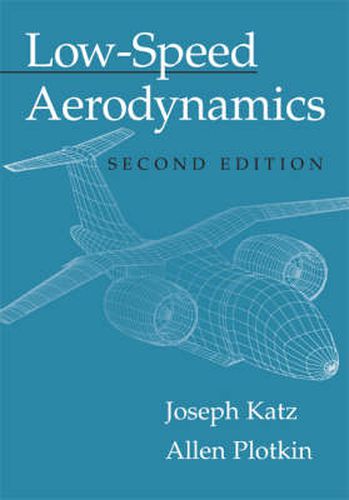Readings Newsletter
Become a Readings Member to make your shopping experience even easier.
Sign in or sign up for free!
You’re not far away from qualifying for FREE standard shipping within Australia
You’ve qualified for FREE standard shipping within Australia
The cart is loading…






Low-speed aerodynamics is important in the design and operation of aircraft flying at low Mach number, and ground and marine vehicles. This book offers a modern treatment of the subject, both the theory of inviscid, incompressible, and irrotational aerodynamics and the computational techniques now available to solve complex problems. A unique feature of the text is that the computational approach (from a single vortex element to a three-dimensional panel formulation) is interwoven throughout. Thus, the reader can learn about classical methods of the past, while also learning how to use numerical methods to solve real-world aerodynamic problems. This second edition brings the first entirely up to date, with a new chapter on the laminar boundary layer (emphasis on the viscous-inviscid coupling), the latest versions of computational techniques, and additional coverage of interaction problems. It includes a systematic treatment of two-dimensional panel methods and a detailed presentation of computational techniques for three-dimensional and unsteady flows. With extensive illustrations and examples, this book will be useful for senior and beginning graduate-level courses, as well as a helpful reference tool for practising engineers.
$9.00 standard shipping within Australia
FREE standard shipping within Australia for orders over $100.00
Express & International shipping calculated at checkout
Low-speed aerodynamics is important in the design and operation of aircraft flying at low Mach number, and ground and marine vehicles. This book offers a modern treatment of the subject, both the theory of inviscid, incompressible, and irrotational aerodynamics and the computational techniques now available to solve complex problems. A unique feature of the text is that the computational approach (from a single vortex element to a three-dimensional panel formulation) is interwoven throughout. Thus, the reader can learn about classical methods of the past, while also learning how to use numerical methods to solve real-world aerodynamic problems. This second edition brings the first entirely up to date, with a new chapter on the laminar boundary layer (emphasis on the viscous-inviscid coupling), the latest versions of computational techniques, and additional coverage of interaction problems. It includes a systematic treatment of two-dimensional panel methods and a detailed presentation of computational techniques for three-dimensional and unsteady flows. With extensive illustrations and examples, this book will be useful for senior and beginning graduate-level courses, as well as a helpful reference tool for practising engineers.